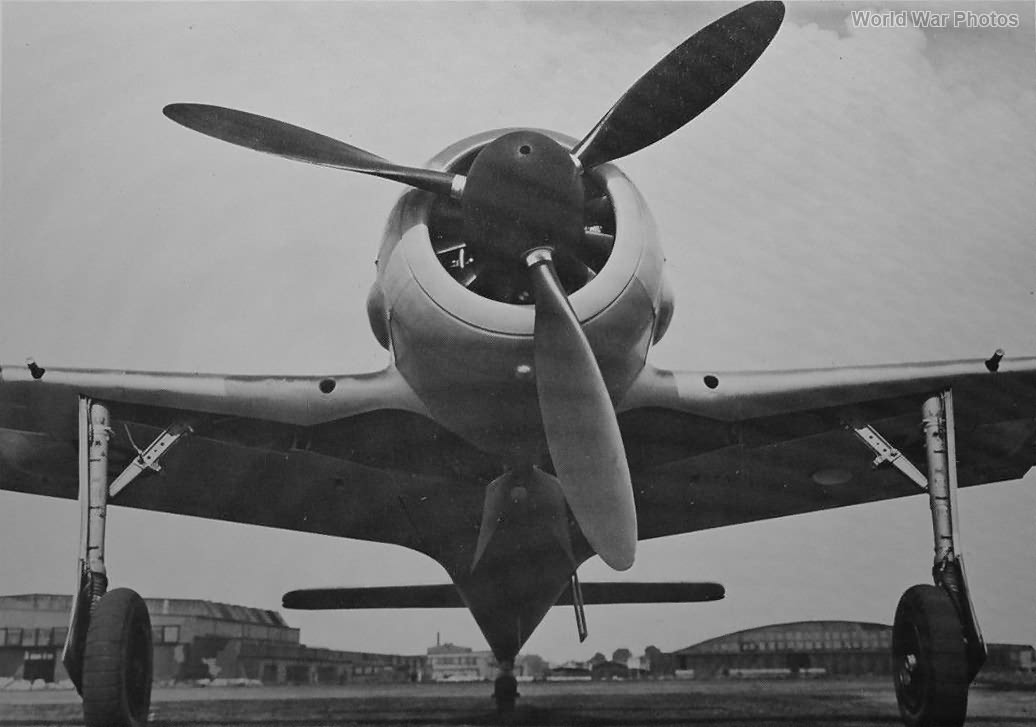Challenges in the Initial Deployment of the Fw 190A-1
The initial deployment of the Fw 190A-1, the first production variant of the Focke-Wulf Fw 190 fighter, was marked by several challenges, primarily stemming from the BMW 801 engine.
Engine Problems
Overheating: The BMW 801 engine, particularly the rear cylinders, was prone to overheating, especially during ground operations or after prolonged low-revs operation. This overheating stemmed from insufficient airflow for cooling. As a result, cockpit temperatures could become extremely high, reaching 55 °C or more, posing a significant risk to the pilot. While the use of a ducted spinner on the first prototype, the Fw 190 V1, was intended to improve cooling, it ultimately proved ineffective. This issue wasn’t fully resolved until the introduction of cooling slots on the later Fw 190A-2 model.
Malfunctions and Reliability Issues: Alongside overheating, the BMW 801 engine suffered from a multitude of malfunctions and reliability problems. These issues included:
- Fuel and oil system leaks
- Problems with the Kommandogerät, the engine’s automatic control unit
- Difficulties with the VDM variable-pitch propeller
- Excessive spark plug wear
- Engine cowlings opening in flight due to a faulty lock design
Emergency Canopy Jettisoning: Pilots also faced difficulties with the emergency jettisoning of the cockpit hood at speeds above 250 km/h, as the aerodynamic flow pressed the canopy against the fuselage. This problem was eventually resolved by incorporating a small explosive cartridge to force the canopy off.
These engine-related challenges significantly impacted the Fw 190A-1’s operational reliability and safety during its initial deployment. These problems led to frequent groundings and limited the aircraft’s ability to operate effectively in the field.
Addressing the Challenges
To address these issues, Erprobungsstaffel 190, a special test flight unit, was formed under Technical Officer Oberleutnant Otto Behrens. This unit, equipped with six Fw 190A-0s, conducted extensive trials to identify and rectify the aircraft’s shortcomings. Behrens, a trained motor mechanic, worked closely with his engineers and pilots, most of whom were seconded from II./JG 26, to troubleshoot the problems and implement solutions.
The rigorous testing and collaborative efforts of Erprobungsstaffel 190, alongside the design teams at Focke-Wulf and BMW, led to the introduction of over 50 modifications. These modifications were crucial in convincing the RLM to accept the Fw 190 for Luftwaffe service. The Fw 190 A-4, which entered production in July 1942, addressed nearly all the initial build quality and reliability concerns.
Other Challenges
In addition to the engine-related challenges, other issues arose during the initial deployment of the Fw 190A-1:
Build Quality Concerns: Early production Fw 190s faced several quality control issues, such as irregular wing sizes from different manufacturers, poor wheel brakes, fuel pump failures, and poorly fitting cockpit canopies.
Pilot Training: The transition to the Fw 190A-1 required pilots to adapt to a new aircraft with different handling characteristics compared to the Bf 109. This transition necessitated specific training programs to familiarize pilots with the Fw 190’s unique features and capabilities.
Despite these challenges, the Fw 190A-1 demonstrated its potential as a formidable fighter aircraft. The teething problems experienced during its initial deployment were gradually overcome through continuous development and modifications, paving the way for the Fw 190’s success as one of the Luftwaffe’s most effective fighters in World War II.
